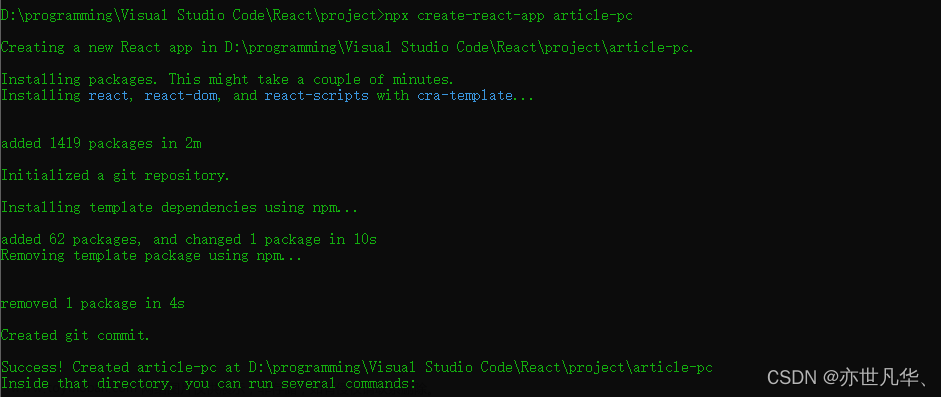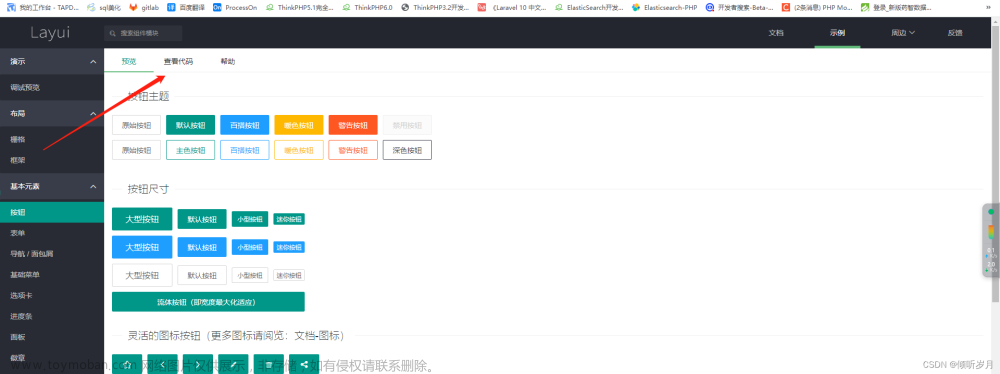1. 用到的技术
1.1 导模块
from flask import Flask, render_template, jsonify, redirect, request, url_for, session1.2 模块介绍
1.3 flask路由系统
1.3.1 普通使用
@app.route('/delete')1.3.2 带有名分组
@app.route('/edit/<string:nid>', methods=['GET', 'POST']) # 有名分组 默认string1.3.3 带请求限制
@app.route('/login', methods=['GET', 'POST']) # 默认支持get,需要手动添加post1.3.4 带别名,默认别名是函数名
@app.route('/index', endpoint='index') # 起别名,不写默认函数名称1.3.5 路由其他参数(默认string)
DEFAULT_CONVERTERS = {
'default': UnicodeConverter,
'string': UnicodeConverter,
'any': AnyConverter,
'path': PathConverter,
'int': IntegerConverter,
'float': FloatConverter,
'uuid': UUIDConverter,
}1.3.6 路由的本质
本质就是:app.add_url_rule()
路由加载的源码流程
-将ur1和函数打包成为rule对象
-将ru1e对象添加到map对象中。
- app.url_map = map对象
endpoint:如果不写默认是函数名,endpoint不能重名
# 一般使用第一种
@app.route('/index')
def index():
return render_template(' index.html ')
# 第二种
def home():
return render_template(' index.html ')
app.add_url_rule('/home', 'home', home)
|1.3.7 app.add_url_rule参数
@app.route和app.add_url_rule参数:
rule:URL规则
view_func:视图函数名称
defaults = None, 默认值, 当URL中无参数,函数需要参数时,使用defaults = {'k': 'v'}
为函数提供参数
endpoint = None, 名称,用于反向生成URL,即: url_for('名称')
methods = None, 允许的请求方式,如:["GET", "POST"]
#对URL最后的 / 符号是否严格要求,默认严格,False,就是不严格
strict_slashes = None
'''
@app.route('/index', strict_slashes=False)
#访问http://www.xx.com/index/ 或http://www.xx.com/index均可
@app.route('/index', strict_slashes=True)
#仅访问http://www.xx.com/index
'''
#重定向到指定地址
redirect_to = None,
'''
@app.route('/index/<int:nid>', redirect_to='/home/<nid>')
'''1.4 获取提交的数据
# 1. get请求
nid = request.args.get('nid')
# 2. post请求
username = request.form.get('username')
1.5 返回数据
1.5.1 返回时的格式文章来源:https://www.toymoban.com/news/detail-414621.html
return render_template('login.html', error='用户名错误')
return render_template('login.html', **{'error':'xxx','age':'xxx'})1.5.2 坑1,出现找不到模板,解决办法
- 项目下面是否有templates文件夹,你的html文件是否放进了里面;
- templates文件夹是否和你运行的py文件在同一级目录;
- render_template('***.html')这里面的名字是否正确,别打错了;
- app = Flask(__name__, template_folder='templates') 在最开始的这句话中,template_folder后面一定要跟上templates;
1.6 session&装饰器
1.6.1 导入&使用
import functools
from flask import session
# flask使用session需要,传入一个secret_key,flask会生成一个key返回给前端,类似于cookie存储
app.secret_key = 'lfsakhfnednlasdjmcls'
def auth(func):
@functools.wraps(func)
def inner(*args, **kwargs):
if session.get('username'):
# print(session.get('username'))
ret = func(*args, **kwargs)
return ret
return redirect(url_for('login'))
return inner
@app.route('/index', endpoint='index') # 起别名,不写默认函数名称
@auth
def index():
"""首页"""
return render_template('index.html', data_dict=DATA_LIST)
1.6.2 装饰器的使用方法
@app.before_requestdef
def func():
print('xxx')
def x1():
print('xxx')
x1.app.before_request(x1)1.7 request介绍
- django的请求处理是逐一封装和传递;
- flask的请求是利用上下文管理来实现的。
1.8 django/flask介绍
- django是个大而全的框架,flask是一个轻量级的框架。 django内部为我们提供了非常多的组件:
orm / session / cookie / admin / form / modelform/路由/视图/模板/中间件/分页/ auth / contenttype/缓存/信号/多数据库连接- flask框架本身没有太多的功能:路由/视图/模板(jinja2)/session/中间件,第三方组件非常齐全。
2. 快速搭建管理系统
2.1 基本使用
from flask import Flask
# 起一个名字
app = Flask(__name__)
# 配置路由
@app.route('/index')
def index():
return 'hello word'
if __name__ == '__main__':
# 启动
app.run()
2.2 完整版
2.2.1 py
import functools
from flask import Flask, render_template, jsonify, redirect, request, url_for, session
app = Flask(__name__) # 默认 template_folder='templates'
# 模拟数据
DATA_LIST = {
'1': {'name': 'a', 'age': 32},
'2': {'name': 'a', 'age': 64},
}
# flask使用session需要,传入一个secret_key,flask会生成一个key返回给前端,类似于cookie存储
app.secret_key = 'lfsakhfnednlasdjmcls'
def auth(func):
@functools.wraps(func)
def inner(*args, **kwargs):
if session.get('username'):
# print(session.get('username'))
ret = func(*args, **kwargs)
return ret
return redirect(url_for('login'))
return inner
@app.route('/login', methods=['GET', 'POST']) # 默认支持get,需要手动添加post
def login():
"""登录"""
# render_template, # 类似与django中国的render
# jsonify, # 类似与django中国的JsonResponse
# url_for 别名
if request.method == 'GET':
return render_template('login.html')
username = request.form.get('username')
password = request.form.get('password')
if username == '1' and password == '1':
session['username'] = username
return redirect('/index')
return render_template('login.html', error='用户名错误')
@app.route('/index', endpoint='index') # 起别名,不写默认函数名称
@auth
def index():
"""首页"""
return render_template('index.html', data_dict=DATA_LIST)
@app.route('/edit/<string:nid>', methods=['GET', 'POST']) # 有名分组 默认string
@auth
def edit(nid):
"""编辑"""
if request.method == 'GET':
user_dic = DATA_LIST.get(nid)
# print(user_dic) # {'name': 'a', 'age': 32}
return render_template('edit.html', user_dic=user_dic)
name = request.form.get('username')
age = request.form.get('age')
DATA_LIST[nid]['name'] = name
DATA_LIST[nid]['age'] = age
return redirect('/index')
@app.route('/delete')
@auth
def delete():
"""删除"""
nid = request.args.get('nid')
print(nid) # 2
del DATA_LIST[nid]
return redirect(url_for('index'))
if __name__ == '__main__':
app.run()
2.2.2 login.html
<!DOCTYPE html>
<html lang="en">
<head>
<meta charset="UTF-8">
<title>登录</title>
</head>
<body>
<form method="post">
<p>用户名:<input type="text" name="username"></p>
<p>密码:<input type="password" name="password"></p>
{{ error }}
<input type="submit" value="提交">
</form>
</body>
</html>2.2.3 index.html
<!DOCTYPE html>
<html lang="en">
<head>
<meta charset="UTF-8">
<title>Title</title>
<link href="https://cdn.bootcdn.net/ajax/libs/twitter-bootstrap/3.4.1/css/bootstrap.min.css" rel="stylesheet">
</head>
<body>
<div>
<div class="bs-example" data-example-id="hoverable-table">
<div class="panel panel-info">
<div class="panel-heading">
<h3 class="panel-title">xx管理系统</h3>
</div>
<div class="panel-body">
<table class="table table-hover">
<thead>
<tr>
<th>序号</th>
<th>名称</th>
<th>年龄</th>
<th>操作</th>
</tr>
</thead>
<tbody>
{% for key,item in data_dict.items() %}
<tr>
<th scope="row">{{ key }}</th>
<td>{{ item.name }}</td>
<td>{{ item["age"] }}</td>
<td><a href="/edit/{{ key }}">编辑</a>|
<a href="/delete?nid={{ key }}">
删除
</a>
</td>
</tr>
{% endfor %}
</tbody>
</table>
</div>
</div>
</div>
</div>
<script src="https://cdn.bootcdn.net/ajax/libs/jquery/3.4.1/jquery.min.js"></script>
<script src="https://cdn.bootcdn.net/ajax/libs/twitter-bootstrap/3.4.1/js/bootstrap.min.js"></script>
</body>
</html>2.2.4 edit.html
<!DOCTYPE html>
<html lang="en">
<head>
<meta charset="UTF-8">
<title>编辑</title>
</head>
<body>
<form method="post">
<p>用户名:<input type="text" name="username" value="{{ user_dic.name }}"></p>
<p>密码:<input type="text" name="age" value="{{ user_dic.age }}"></p>
<input type="submit" value="提交">
</form>
</body>
</html>3. 截图
 文章来源地址https://www.toymoban.com/news/detail-414621.html
文章来源地址https://www.toymoban.com/news/detail-414621.html
到了这里,关于基于Flask快速搭建一个管理系统的文章就介绍完了。如果您还想了解更多内容,请在右上角搜索TOY模板网以前的文章或继续浏览下面的相关文章,希望大家以后多多支持TOY模板网!













